Did you know that nearly 60% of dog owners wonder why their furry friends take toys outside to pee? . It might seem quirky, but there’s a reason behind this behavior. Dogs often carry their toys outside as a way to mark their territory and communicate with other animals. This action is deeply rooted in their instincts and serves as a form of social interaction. Understanding why your dog engages in this peculiar habit can provide valuable insights into their behavior and needs. In this post, I’ll explore “why does my dog take a toy outside to pee“, shedding light on this common yet puzzling behavior. Let’s uncover the fascinating world of canine communication and territorial instincts together!
Key Takeaways
Understand Your Dog’s Behavior: Recognize that dogs may take toys outside to pee due to natural instincts and behaviors, such as territorial marking.
Emotional Toy Attachment: Dogs can form strong emotional attachments to their toys, leading them to carry them around, even during potty breaks.
Territorial Marking: Taking toys outside can be a way for dogs to mark their territory, a common behavior in canines.
Positive Training Methods: Use positive reinforcement and training techniques to encourage desired behaviors and discourage unwanted habits.
Discourage Unwanted Behavior: Provide alternative activities or toys indoors to discourage your dog from taking toys outside for urination.
Promote Healthy Toy Relationships: Help your dog develop a healthy relationship with toys by rotating them regularly and engaging in interactive play.
Address Obsessive Behaviors: Monitor your dog’s behavior for signs of obsession with toys and seek professional guidance if necessary to address any underlying issues.
Encourage Balanced Interactions: Encourage a balanced approach to toy play and outdoor activities to ensure your dog’s overall well-being and happiness.
Unveiling Canine Behavior
Body Language
Observe your dog’s behavior closely when they take toys outside to pee. Look for signs like sniffing, circling, or digging before they do their business.
Dogs have a natural instinct to hide their scent by eliminating away from their living area. This behavior stems from their ancestors who would hide food to protect it from other animals.
When your pup takes a toy outside to pee, it could be a way of marking territory. Dogs use urine and feces to communicate with other animals in the area.
Breed Instincts
The type of breed can also influence this behavior. Some breeds, like terriers, are more prone to digging and burying objects. Understanding your dog’s breed characteristics can provide insights into their actions.
Certain breeds have a strong prey drive, which might explain why your dog carries toys outside. They may see the toy as prey and want to “hunt” it outdoors.
Consulting a professional trainer or animal behaviorist can help decipher your dog’s actions. They can offer personalized advice based on your dog’s specific behaviors and needs.
Exploring Emotional Toy Attachment

Comforting Presence
Dogs often form emotional attachments to their favorite toys, viewing them as sources of comfort and security. These toys become more than just playthings; they provide a sense of familiarity and reassurance. When taking a toy outside to pee, your dog might be seeking this familiar presence for added comfort during vulnerable moments.
It’s essential to recognize that dogs can develop strong emotional bonds with their possessions, treating them almost like babies. This attachment stems from the toy’s association with positive experiences, such as playtime or relaxation. By observing your dog’s behavior with their favorite toy, you can gain insight into the depth of their emotional connection.
Introducing New Toys
When introducing a new toy to your dog, it’s crucial to do so gradually. Dogs may need time to adjust and form an attachment to the new item. By slowly incorporating the new toy into your dog’s routine, you can observe how they interact with it and whether they show a preference for one toy over another.
In my experience, I found that rotating between different toys can help prevent boredom and stimulate your dog mentally. It also allows you to gauge which toys your dog is most attached to based on their reactions and behaviors. Understanding your dog’s preferences can strengthen your bond and enhance their overall well-being.
Decoding Territorial Marking
Significance of Marking Territory
Dogs mark their territory as a way to communicate with other animals, leaving their scent to claim ownership. This behavior is instinctual, rooted in their ancestral need to establish boundaries for safety and security. Providing your dog with toys and allowing them to take them outside can trigger this marking behavior.
When a dog takes a toy outside to pee, it’s essentially stating ownership of that object and the surrounding area. This action is a form of communication, indicating to other animals that this specific spot belongs to them. By understanding this behavior, you can better address any underlying issues causing it.
Positive Reinforcement Techniques
To modify territorial marking behaviors, positive reinforcement techniques are key. When your dog marks inside instead of outside, do not punish them. Instead, redirect their attention by offering treats or engaging them in play. Consistency is crucial in reinforcing positive behaviors and discouraging unwanted ones.
Implementing training sessions where your dog learns commands like “drop it” or “leave it” can also be effective. Rewarding good behavior with praise and treats will encourage your dog to follow commands and exhibit desired behaviors.
Providing Outlets for Natural Instincts
It’s essential to provide appropriate outlets for your dog to express their natural instincts in a controlled manner. Engage in regular exercise and playtime with your dog to help release excess energy and reduce the urge to mark territory indoors.
Creating a designated outdoor potty area for your dog can also help channel their marking behavior appropriately. Encourage them to use this space by rewarding them when they do so successfully. By giving your dog clear boundaries and outlets for their instincts, you can help manage territorial marking behaviors effectively.
Understanding Toy Significance
Importance of Toys
Toys play a crucial role in your dog’s daily routine, providing mental stimulation and physical exercise. They help prevent boredom and destructive behaviors in dogs.
I always make sure to rotate my dog’s toys regularly to keep him engaged and excited. This prevents him from getting too attached to specific items, promoting variety in his playtime.
Choosing the Right Toys
Consider the material, size, and texture of toys based on your dog’s preferences. Some dogs prefer soft plush toys, while others enjoy interactive puzzles or durable chew toys.
When selecting toys for my dog, I always consider his preferences and play style. For example, if he loves playing fetch, I choose durable balls or frisbees that can withstand outdoor play.
Training Methods for Positive Behavior
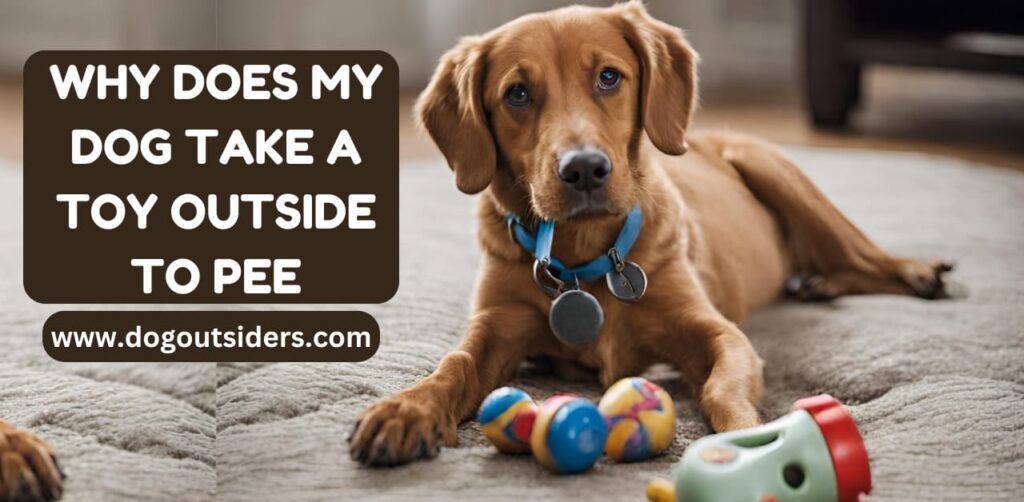
Reward-Based Training
Reward-based training involves using treats or praise to reinforce good behaviors in your dog. When your dog takes a toy outside to pee, offer a treat when they bring it back inside instead.
Training your dog to understand that good behavior results in rewards can help them make positive associations with their actions. By consistently rewarding desirable behaviors, you can effectively shape their habits over time.
Implementing a reward system not only encourages the desired behavior but also strengthens the bond between you and your furry friend. This positive reinforcement technique is widely recognized as an effective way to train dogs.
Consistent Potty Routine
Establishing a consistent potty routine is crucial for reducing accidents related to taking toys outside to pee. Take your dog out at regular intervals throughout the day to prevent them from feeling the need to mark their territory with toys.
Dogs thrive on routine, so maintaining a consistent schedule for bathroom breaks can help them understand where and when it’s appropriate to relieve themselves. Consistency is key in reinforcing the message that toys are meant for play, not as bathroom accessories.
Personal Experience: I found that sticking to a strict potty routine significantly reduced instances of my dog using toys outdoors for purposes other than play. Consistency and patience are essential when training your pet in this aspect.
Obedience Training
Incorporating obedience training into your dog’s routine can further reinforce good habits and deter unwanted behaviors like taking toys outside to pee. Teach commands such as “drop it” or “leave it” to redirect their focus away from inappropriate actions.
Obedience training not only helps correct undesirable behaviors but also enhances communication between you and your dog. Clear commands and consistent enforcement of rules establish boundaries that promote positive behaviors.
Alternatives to Discourage Outdoor Toy Trips
Interactive Toys
Offer engaging toys indoors to divert your dog’s attention from carrying toys outside. Rotate different toys regularly to keep them entertained and mentally stimulated.
Dogs carry toys outside because they are seeking stimulation and entertainment. By providing a variety of interactive toys indoors, you can prevent them from feeling the need to take their toys outside.
Supervised Potty Breaks
Monitor your dog closely during outdoor potty breaks to prevent them from bringing toys along. Redirect their focus by engaging in play or offering treats immediately after they finish going potty.
When I noticed my dog consistently taking his toys outside, I started supervising his bathroom trips more closely. By staying vigilant and redirecting his attention, I successfully discouraged this behavior over time.
Training Commands
Teach your dog commands like “drop it” or “leave it” to deter them from carrying toys outdoors. Consistently reinforce these commands during potty breaks to establish boundaries and expectations.
Using training commands has been effective in curbing my dog’s habit of taking toys outside. With consistent practice and positive reinforcement, he now understands when it’s not appropriate to bring his toys out with him.
Fostering Healthy Toy Relationships
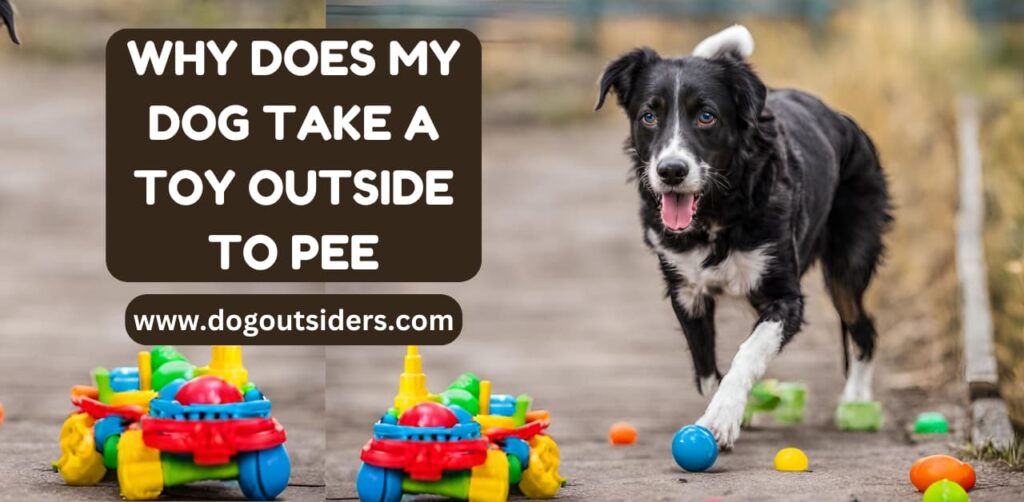
Encouraging Playtime
Engage in interactive play sessions with your dog regularly to strengthen your bond and provide mental stimulation. Use a variety of toys, including squeaky toys, ropes, and balls, to keep them entertained.
Taking the time to play with your dog not only helps prevent boredom but also promotes physical activity and overall well-being. It’s a great way to reinforce positive behavior and build trust between you and your furry companion.
Monitoring Toy Interactions
Keep an eye on how your dog interacts with their toys to ensure they are playing safely without any risk of swallowing small parts or causing harm. Regularly inspect the toys for signs of wear and tear that could pose a choking hazard.
Intervene if you notice any destructive behavior towards the toys, redirecting their attention to appropriate items. Teaching them proper toy manners will help maintain a healthy relationship with their playthings.
Rotating Toy Selection
Rotate the toys available to your dog to prevent boredom and keep them mentally engaged. Introducing new toys periodically can spark their interest and curiosity, encouraging active play and exploration.
By offering a variety of textures, shapes, and sizes in their toy box, you cater to different preferences and play styles that suit your dog’s individual needs. This approach also prevents them from getting too attached to a single toy.
Helpful Personal Insights:
I find that incorporating puzzle toys into playtime not only entertains my dog but also challenges their problem-solving skills. It’s rewarding to see them engaged and excited while figuring out how to retrieve treats from the toy.
Knowledge Sharing:
From my experience, establishing a routine for toy play helps create a sense of anticipation and excitement for both me and my dog. It strengthens our bond through shared activities that bring joy to our daily lives.
Addressing Obsessive Behaviors
Signs of Obsessive Behavior
Dogs taking toys outside to pee can indicate obsessive behavior towards their toys. This behavior may stem from a strong attachment to specific objects. Excessive attachment to toys can lead dogs to carry them everywhere, even during bathroom breaks.
The dogs display obsessive tendencies by repeatedly carrying the same toy outdoors for various activities, including peeing. This behavior might be accompanied by other signs of distress or anxiety. If your dog exhibits such behaviors, it’s essential to address them promptly.
Seek guidance from a veterinarian or a professional behavior specialist if your dog’s attachment to toys becomes problematic. These experts can provide insights into the underlying causes of this behavior and recommend suitable interventions.
Behavior Modification Techniques
Implementing behavior modification techniques is crucial in addressing obsessive behaviors related to toys and outdoor activities. Encouraging alternative behaviors and distractions can help shift your dog’s focus away from excessive toy attachment.
Engage in interactive play sessions with your dog using a variety of toys to reduce fixation on a single object. Providing mental stimulation through puzzle toys and training exercises can also promote balanced behavior and prevent obsessions.
Incorporate regular exercise routines and outdoor activities to channel your dog’s energy positively. Physical activity not only benefits your dog’s overall well-being but also helps in reducing stress and anxiety that may contribute to obsessive behaviors.
During training sessions, offer rewards and praise for desired behaviors while redirecting attention from obsessive habits. Consistency and patience are key when modifying your dog’s behavior patterns effectively.
Encouraging Balanced Interactions
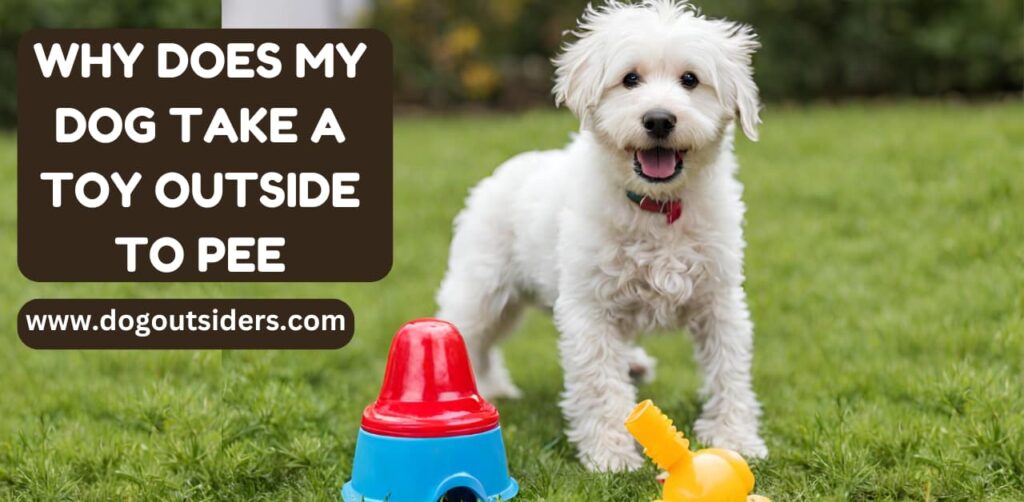
Create Harmony
Establish a harmonious environment for your dog’s activities. Balance playtime, potty breaks, and relaxation to ensure a well-rounded experience. Varying the setting can prevent monotony and encourage exploration. Encourage both indoor and outdoor activities to cater to your dog’s diverse needs. Provide engaging toys and safe spaces for play indoors. Outdoors, offer opportunities for running, sniffing, and social interactions with other dogs
Maintain a Healthy Routine
Maintain a consistent routine that includes exercise, training sessions, and downtime. This balance is crucial for your dog’s physical health and mental stimulation. Regular walks or interactive games can keep your dog engaged and happy.
Incorporate mental challenges into your dog’s routine to prevent boredom or destructive behaviors. Puzzle toys or training exercises can stimulate their mind while providing a sense of accomplishment.
Personal Experience: I have found that incorporating short training sessions throughout the day not only reinforces good behavior but also strengthens the bond between me and my dog.
Provide Adequate Stimulation
Ensure your dog has access to various forms of stimulation throughout the day. Interactive toys, food puzzles, and agility exercises can keep them mentally sharp and physically active.
Offer different textures and types of toys to keep your dog engaged during playtime. Rotating toys regularly can prevent boredom and maintain their interest in their belongings.
Conclusion:
The reasons behind why dogs take their toys outside to pee, it’s evident that this behavior is deeply rooted in their instincts and emotions. Understanding the significance of this action can help us better cater to our furry friends’ needs and foster healthier relationships with them. By implementing positive training methods and offering alternatives when necessary, we can encourage balanced interactions and address any obsessive behaviors that may arise.
Next time you catch your dog carrying their toy outside for a bathroom break, remember that it’s more than just a random act – it’s a display of their natural tendencies and emotional connections. By being mindful of these insights, we can create a more enriching environment for our canine companions to thrive in.
FAQ’s:
Dogs may carry their toys outside to mark their territory or feel more secure during vulnerable moments. It’s a natural behavior linked to their instincts and emotions.
Redirect your dog’s focus by providing interactive toys indoors, engaging in playtime, and rewarding indoor play. Consistent training and positive reinforcement can help shift this behavior.
Yes, dogs can form strong emotional bonds with their toys, viewing them as companions or security objects. This attachment is a common canine behavior that provides comfort and reduces anxiety.
Obsessive behaviors like constant fixation on a specific toy, guarding it excessively, or showing distress when separated from the toy indicate potential issues. Address these behaviors through training and enrichment activities.
Rotate your dog’s toys regularly to keep them engaged and prevent over-attachment. Encourage balanced interactions by incorporating various types of toys that cater to different play styles and preferences.

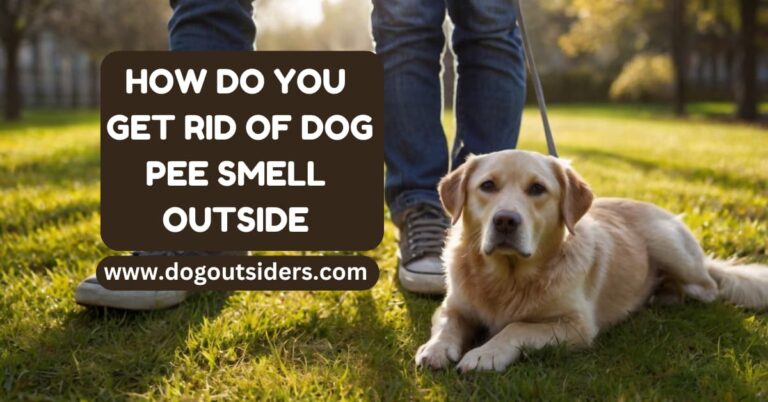



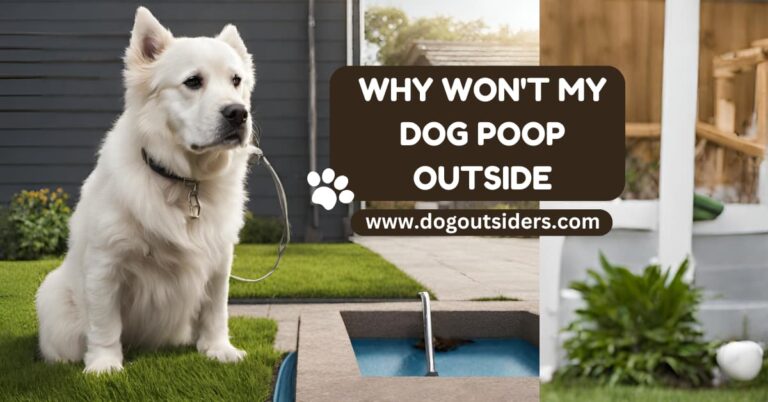
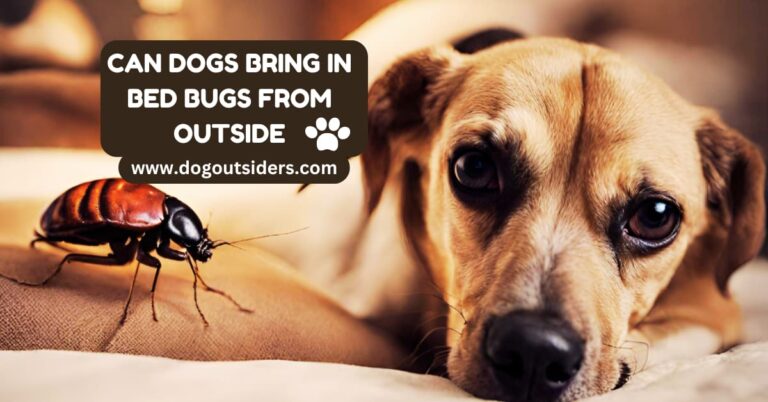
7 Comments